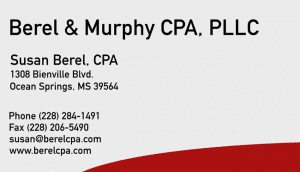Do you have strong sales but still find yourself in a cash crunch? The solution could be shortening the amount of time it takes to collect your accounts receivable. Here’s what you should do.
1. Speed Up Your Invoicing
Do you batch up invoices and send them all at the end of the week or month? That’s only adding more time until customers can start paying you.
2. Use Milestone Invoicing
If you have large projects that cover long periods of time, bill at milestones rather than upon completion. This might be when you order physical supplies, upon meeting specific goals, or at set periods of time.
In addition to having cash coming in on the project sooner, you reduce the risk of not collecting on the full amount in the event your customer fails to pay.
3. Have Clearly Itemized Invoices
Customers may delay paying an invoice that they don’t understand or disagree with. To reduce the amount of questions you receive about invoices, use clear item names with detailed descriptions. Don’t use codes or shorthand that your customers might not understand, and don’t lump everything together.
This will also help to avoid having customers feel that you’re padding your invoices.
4. Don’t Feel Bad About Asking for Payment
You should never feel bad about asking for payment. That’s how you end up with months-old invoices from customers who are no longer in business.
You should also begin weekly or bi-weekly phone calls once an invoice is past due. Not all past-due accounts are trying to avoid payment. Some may have simply forgotten the invoice, while others might have had an address or staffing change that resulted in the invoice falling through the cracks.
5. Be Smart About Extending Credit
If you have salesmen or managers who receive incentives for increased sales, have someone in a different department make any credit decisions. Finally, don’t be afraid to reduce customer credit limits if their financial situation changes or they fall behind on payments.
6. Be Flexible with Payment Options
Some customers will have very rigid accounts payable procedures. Some might insist on mailing paper checks, others might only use direct deposits, and some may prefer credit card payments.
Accept as many payment options as possible so that customers can pay you within their regular workflow rather than pushing you to the back of the line. Even if this means eating additional transaction fees, the improved cash flow will almost always be worth the small additional cost.
7. Know Your Accounts Receivable Aging Numbers
Every business has a unique mix of customers, and what works best for one may not be right for another. Textbook advice works in most situations, but like with anything else, optimizing your collections comes down to knowing your numbers.
Run monthly reports showing your accounts receivable aging and time to collect. This data will help you to identify trends and common issues so that you can continue to optimize your collections process.


